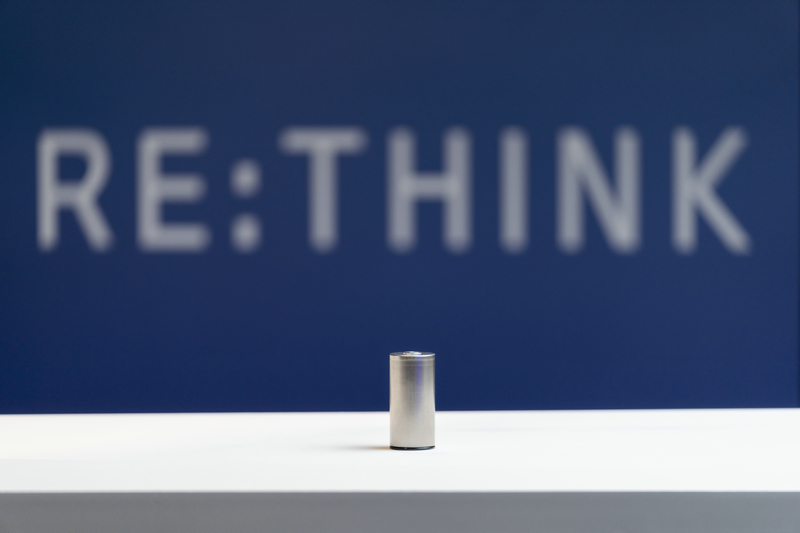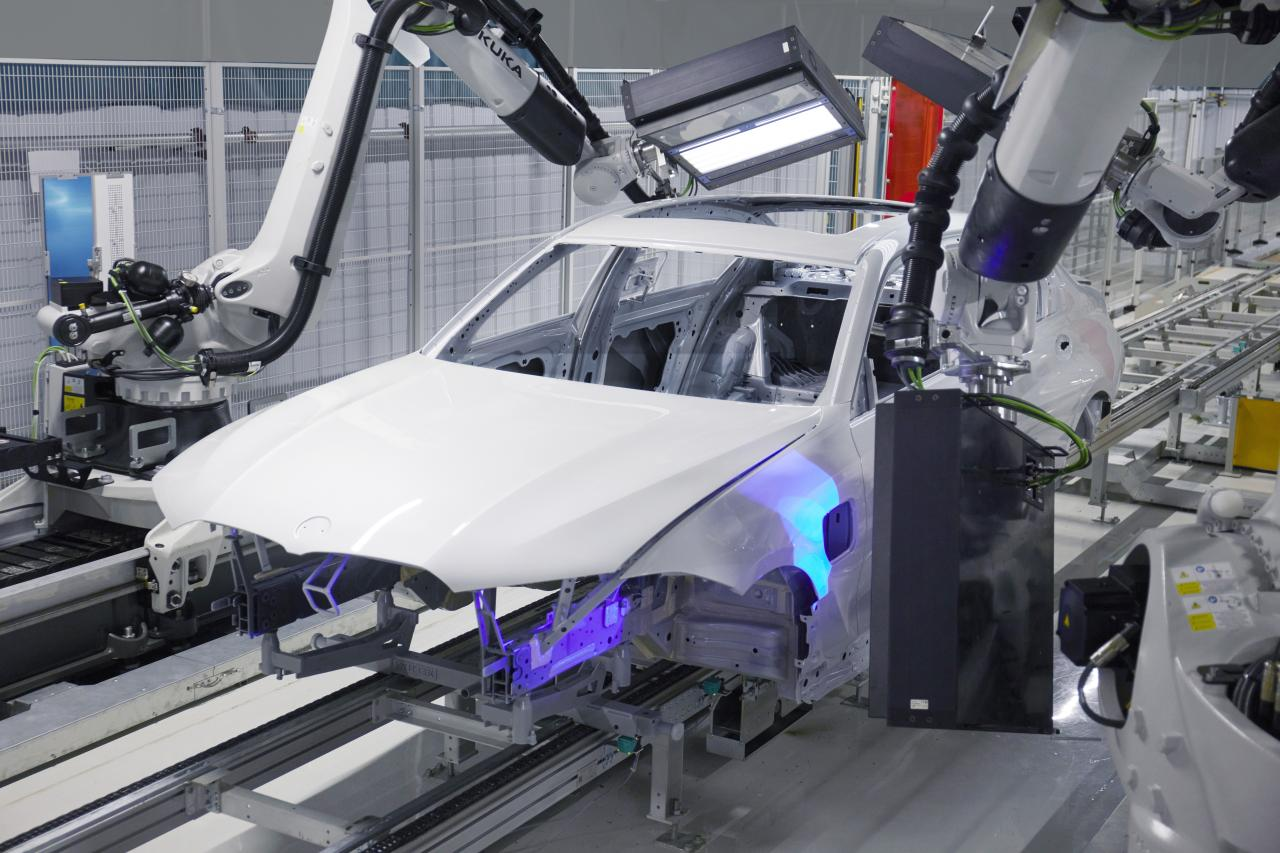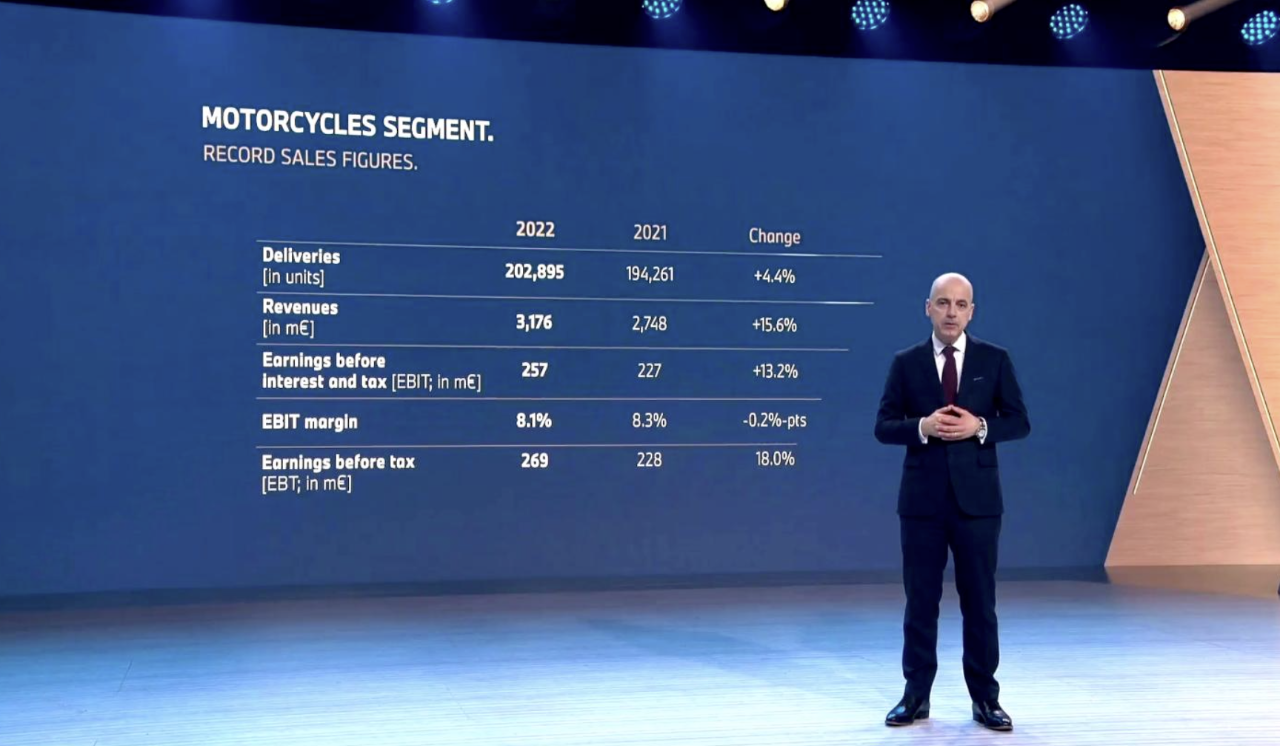| Author | Lianyi Zhang |
|---|---|
| Editor | Kaijun Qiu |
The revolutionary product of BMW Group’s full electrification – the new generation car planning is fully exposed.
On March 15th, at the 2023 Financial Report Annual Meeting, BMW Group unveiled the product planning of the new generation car for the first time. According to the plan, BMW Group will begin production of the new generation car from the second half of 2025. At least six new generation car models will be mass-produced in the following 24 months, including a sporty multi-purpose vehicle (SAV) and a pure electric sedan in the BMW 3 Series segment market.
BMW Group Chairman Zipse introduced that the new generation car will be based on the architecture designed specifically for electric vehicles and a completely new design language, with three major features: a newly developed electronic and electrical architecture, a new user interface and human-machine interaction concept; a newly developed electric powertrain and battery system; and an improvement in the sustainable level of the product’s entire lifecycle.
“Under this plan, BMW plans to deliver more than 10 million pure electric cars to global customers by 2030, of which pure electric car models will account for more than 50% of BMW’s global annual delivery volume. By then, the proportion of pure electric vehicles in the European market will be far higher than 50%,” Zipse said.
Zipse specifically pointed out that if there is a specific time, individual markets or regions require 100% sales of pure electric vehicles, the company has made sufficient preparations.
Pure electric car sales will account for 15% this year
In the new year, BMW is still bullish on pure electric vehicle models.
In 2022, BMW Group delivered more than 215,000 pure electric vehicles in the global market, with a year-on-year increase of more than doubled. In 2023, BMW hopes that pure electric sales will still maintain rapid growth, achieving high double-digit growth.
“We expect pure electric cars to account for 15% of global sales this year, compared to 9% in 2022.” Zipse pointed out that this is not only a leap in delivery volume but also the highest year-on-year growth so far. What’s more, according to BMW’s plan, pure electric car models will account for one-fifth of the group’s annual sales in 2024; this number will be one-fourth in 2025, and it will reach one-third in 2026.”
According to the development trend, “by 2030, pure electric vehicles will account for half of the sales volume, and the cumulative delivery of pure electric vehicles by the BMW Group is expected to exceed 10 million vehicles,” said Qu Zipei. The proportion in the European market will be much higher than 50%, and BMW is also prepared to meet the specific demand for the percentage of sales of pure electric vehicles in individual markets at a specific time.
As of now, BMW has released more than ten pure electric vehicle models globally, covering almost all sub-markets of multiple brands including BMW, MINI, Rolls-Royce, and BMW Motorrad.
To ensure the realization of the above sales target, the BMW Group will also release a series of pure electric new models, including the new pure electric BMW i5, pure electric BMW iX2, and pure electric BMW i5 touring car. The new BMW i5 will be released in a few months and start production this summer, and will be launched in the Korean, European, and American markets from October. The pure electric BMW iX2 will be officially launched at the end of this year, and the pure electric BMW i5 touring car will be launched in the spring of 2024.
At the same time, the BMW Group’s MINI, Rolls-Royce, and BMW Motorrad urban mobility series are also implementing electrification. In the next 10 years, MINI and Rolls-Royce will both become pure electric brands.
On the MINI side, in 2022, the MINI Concept Aceman pure electric cross-boundary concept car made its Asia debut in Shanghai.
On the Rolls-Royce side, the first pure electric vehicle, Rolls-Royce Spectre, will be delivered in the current year, and by 2030, all Rolls-Royce models will be pure electric.
On the BMW Motorrad side, the BMW CE 04 pure electric motorcycle was launched in China last year, and the BMW CE 02 suitable for urban young people will be launched in the future. By 2030, the urban mobility series among the six BMW Motorrad series will achieve full electrification.
“Electric mobility is particularly important for the BMW Group, and it is also an important standard for measuring its own success,” said Qu Zipei. Therefore, the proportion of pure electric vehicle sales will become one of the key performance indicators for the BMW Group management.Of course, BMW is not betting everything on pure electric vehicles. Qu Zhipeng pointed out that the Group still adheres to diversified technology routes and is optimistic about the rapid growth of the high-end luxury car market. The BMW Group believes that sales in this segment will achieve double-digit growth year-on-year by 2023. BMW will also launch two plug-in hybrid 5 series products in 2024.
BMW even looks to launch a hydrogen fuel cell vehicle between 2025 and 2030. It has already exhibited the BMW iX5 Hydrogen fuel cell vehicle that can achieve a driving range of 500km and only needs 3-4 minutes to complete refueling according to WLTP test conditions.
At the same time as the new car’s release, BMW did not forget to talk about technology and factory progress.
In terms of technology, the next-generation models will use BMW’s sixth-generation eDrive electric drivetrain system and a new generation of lithium-ion batteries, which will reduce overall costs by 50\%, increase energy density by more than 20\%, increase driving range by 30\%, and increase charging speed by 30\%. To this end, BMW signed battery core contracts worth over ten billion euros with companies including CATL, EVE Energy, and Farasis Energy last year.
BMW did not provide details of the specific technical route of the new battery. However, the official image provided by BMW shows that this is a large cylindrical cell similar to Tesla’s 4680 cell, which is the 46 series (i.e., with a diameter of 46mm).

In terms of production systems, BMW has also carried out factory transformation and upgrading to match the development of the electric vehicle business. Last year, BMW Group released the BMW iFACTORY production strategy. Taking China as an example, the Huachen BMW production base, with a total investment of RMB 15 billion, has been upgraded in large scale, and has high production flexibility. It can achieve up to 100\% electric vehicle production capacity, with the pure electric BMW i3 being produced there. In the future, more than 30 BMW factories worldwide will follow the BMW iFACTORY production strategy for transformation and upgrading.
 ## BMW Brilliance’s complete consolidation boost the group’s profit growth
## BMW Brilliance’s complete consolidation boost the group’s profit growth
A large amount of capital support is needed behind a series of product, technology R&D and production.
BMW CFO Nicolas Peter introduced that affected by a series of risks such as the epidemic, chip shortage, and raw material price increases, “BMW Group’s sales volume in 2022 is 2.3996 million units, a year-on-year decrease of 4.8%. However, BMW Group’s revenue still maintained high growth, with a total annual revenue of over 142.6 billion euros, a year-on-year increase of 28.2%.”

Nicolas Peter further pointed out that BMW Group’s pre-tax profit margin reached 16.5% in 2022. Among them, the profit of the automotive business section increased by 7.8% year-on-year, and the EBIT (Earnings Before Interest and Taxes) margin of the automotive department reached 8.6%, which is at the upper limit of the target range of 7% to 9%.
Although the sales volume decreased, the profit achieved year-on-year growth. Nicolas Peter said that this mainly comes from the improvement of BMW’s pricing power, the development of the used car business, and the growth of after-sales services.
In addition, BMW Brilliance’s complete consolidation has also promoted BMW’s profit growth. In February 2022, BMW Group increased its stake in China’s joint venture company BMW Brilliance to 75%, and BMW Brilliance achieved complete consolidation in BMW Group’s financial statements. The pre-tax profit of the group reached 23.5 billion euros. If the comprehensive consolidation of BMW Brilliance is not considered, the EBIT margin of BMW’s automotive business section is 11.2%. Compared with 2021, the substantial increase in pre-tax profit mainly reflects the effect of the revaluation of the value of the previously held stake in BMW Brilliance, with an amount of 7.7 billion euros.
As for the free cash flow of the automotive department, it reached 11 billion euros, far exceeding the expected “at least 10 billion euros.” This includes approximately 5 billion euros of net cash generated by BMW Brilliance’s consolidation.
In terms of financial service business, the pre-tax revenue of automotive finance business was 3.2 billion euros, a significant decrease from the previous year, mainly due to the impact of an abnormally positive risk situation. Nicolas Peter said that due to the rise in vehicle prices and optimized product mix, the average financing amount per vehicle has increased, and the financial service department has achieved a stock return rate of 17.9%, which is within the adjusted target range of 17%-20%.One of the highlights of BMW in 2022 is the motorcycle business. According to Nicolas Peter, the BMW motorcycle brand has achieved strong growth in the global market in 2022, with double-digit growth in the US and Latin America. The pre-tax profit margin of the business department is 8.1%, and the pre-tax profit is 269 million euros, which is significantly higher than that of 2021.
In terms of research and development, BMW Group’s R&D investment in 2022 reached 6.624 billion euros, a year-on-year increase of 5.2%. BMW stated that these investments will mainly be used in two directions: firstly, the research and development of new models and the sixth-generation BMW eDrive electric drive technology; secondly, the digital field, especially artificial intelligence, autonomous driving, human-machine interaction, and other aspects.
In 2022, BMW’s R&D investment ratio for the whole year was 5%. BMW hopes that the proportion will decrease to between 4% and 5% in 2023.
In terms of other expenditures, BMW’s expenditures on factories, equipment, and fixed assets reached 7.791 billion euros in 2022, a year-on-year increase of 55.4%. Nicolas Peter stated that these investments include its new and upgraded projects around the world, including the construction of a brand-new factory in Debrecen, Hungary, as well as large-scale upgrades of existing factories in Germany, Mexico, and the US.
Under a combination of new model development, digital infrastructure construction, and investment in the latest battery technology, BMW Group’s capital expenditure rate in 2022 reached 5.5%. Nicolas Peter stated that this number will increase to around 6% in 2023.
All Brands Adopt Direct Sales Model in 2026
Entering 2023, BMW believes that demand in the luxury car market will remain stable. Currently, the US market remains stable, the European market is slightly weak, and the Chinese market is expected to have a recovery from the second quarter.
BMW Group maintains an optimistic attitude towards the order situation in 2023. In Nicolas Peter’s view, “the all-new BMW X1 and the new BMW iX1, launched in the fourth quarter of 2022, provide new impetus for customer orders, especially in the European region. This means that strong pricing levels will continue to be maintained in 2023.”
Nicolas Peter expects that the top-of-the-line models will achieve double-digit growth in 2023, thanks to the launch of the new generation of BMW 7 Series and i7, as well as the upgraded X7 and XM models. In the future, with the local production of the long-wheelbase version of the BMW X5 in China, BMW’s market share in the high-end segment will be further enhanced.However, in terms of the supply chain, BMW believes that 2023 will still be challenging. According to Nicolas Peter’s judgement, the raw materials market will be relatively difficult, chip supply will improve slightly, and energy supply will be relatively stable. However, supply chain interruptions and further major cost burdens may still occur from time to time. Therefore, the overall logistics cost will continue to have a negative impact on the group’s profits.
“Despite the current high inflation and interest rates, as well as the series of challenges mentioned above, we are still confident in 2023.” Nicolas Peter said that targeted investment and strong cooperation with the supplier network will help BMW achieve all its goals in 2023.
Among them, regarding group profits, BMW expects to continue to be affected by the financial consolidation of BMW Brilliance in 2023, with an EBIT margin within the strategic range of 8-10%. The motorcycle business will also continue to maintain an EBIT margin of 8-10%.
For the target of free cash flow in 2023, BMW has set it at around 7 billion euros.
In addition, BMW once again emphasized the shift to direct sales. It was reported that since March of this year, MINI has launched a direct sales model in China. According to the new sales model, MINI dealers will transform into MINI agents and MINI authorized repairers, with agents signing agency agreements and authorized repairers signing service agreements.
In 2024, MINI will also adopt a direct sales model in Europe; by 2026, all BMW brand products will adopt a direct sales model. In BMW’s view, this will bring a win-win result. The transformation of car sales will not only bring a better car purchase experience to consumers but also higher profits to the enterprise.
This article is a translation by ChatGPT of a Chinese report from 42HOW. If you have any questions about it, please email bd@42how.com.
